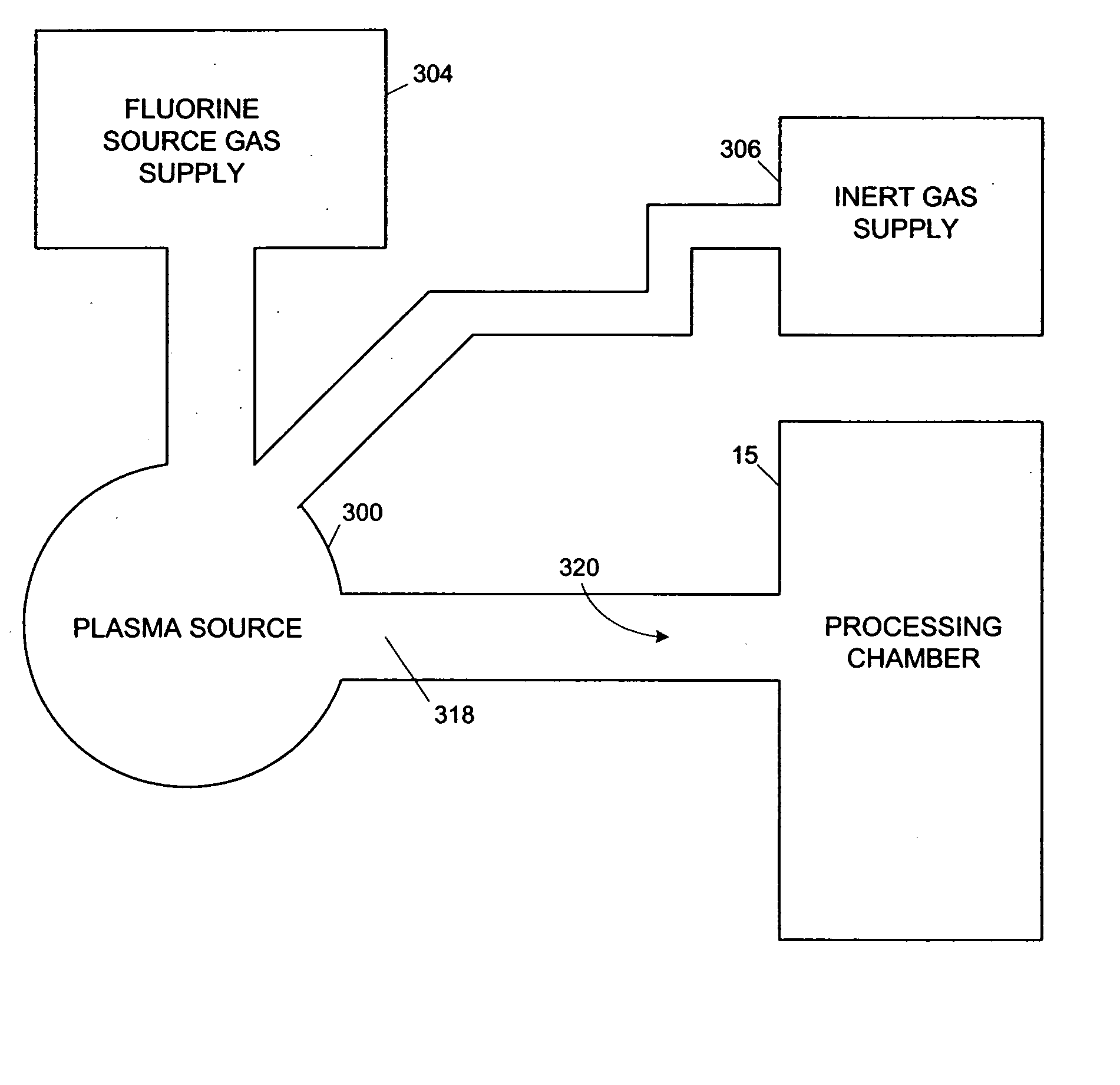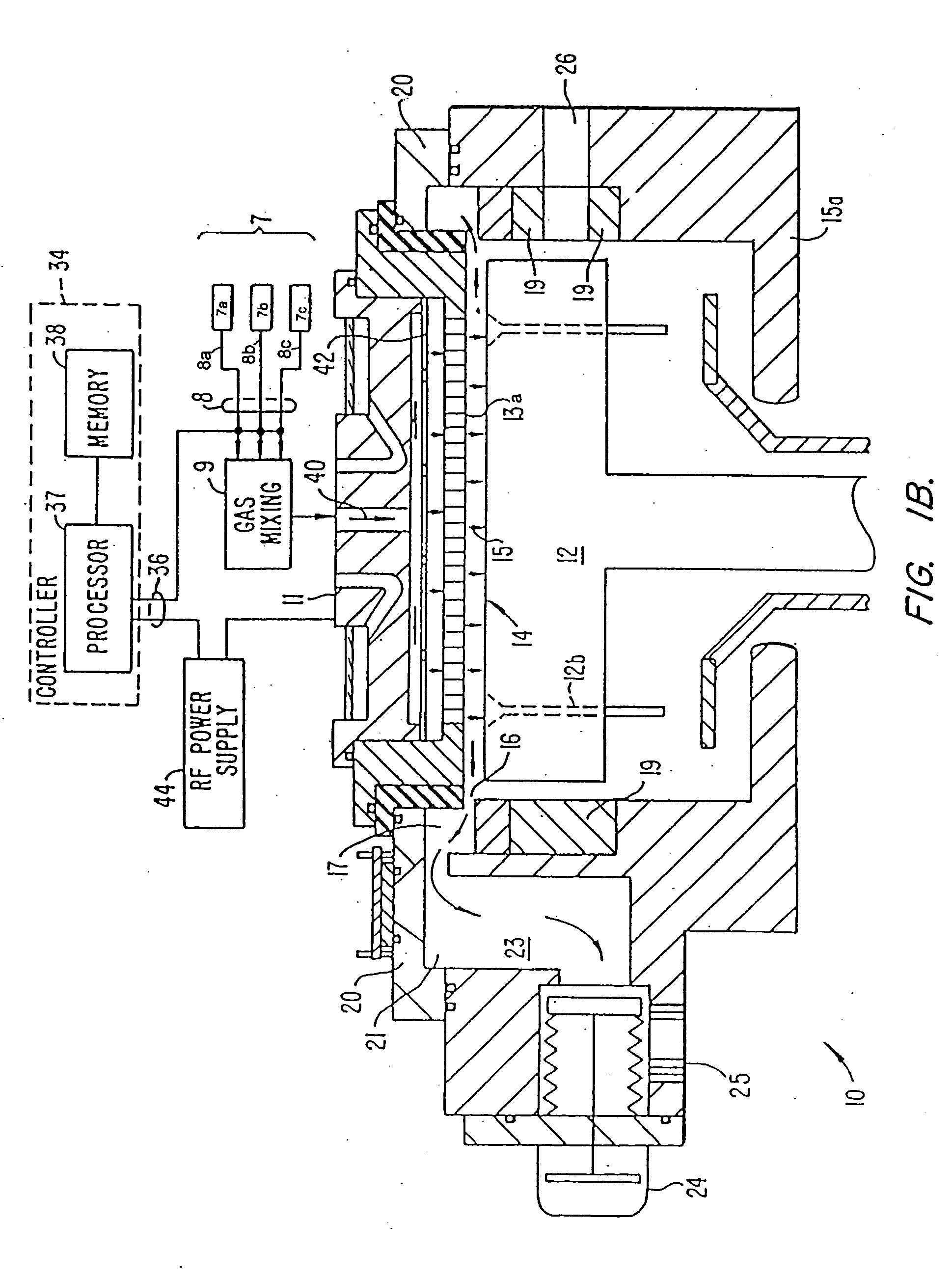Accelerated plasma clean
a plasma clean and plasma technology, applied in the field of substrate processing, can solve the problems of high maintenance cost, undetectable film deposition on any hot surface, defective wafers, etc., and achieve the effect of reducing the time required for cleaning the processing chamber
- Summary
- Abstract
- Description
- Claims
- Application Information
AI Technical Summary
Benefits of technology
Problems solved by technology
Method used
Image
Examples
Embodiment Construction
I. Exemplary CVD System
[0023] Specific embodiments of the present invention may be used with or retrofitted onto a variety of chemical vapor deposition (CVD) or other types of substrate processing apparatus. One suitable substrate processing apparatus with which the present invention can be used or retrofitted is shown in FIGS. 1A and 1B, which are vertical, cross-sectional views of a CVD system 10, having a vacuum or processing chamber 15 that includes a processing chamber wall 15a and processing chamber lid assembly 15b. Processing chamber wall 15a and processing chamber lid assembly 15b are shown in exploded, perspective views in FIGS. 1C and 1D.
[0024] Referring to FIGS. 1A, 1B, 1C and 1D, CVD system 10 contains a gas distribution manifold 11 for dispersing process gases to a substrate (not shown) that rests on a resistively-heated pedestal 12 centered within the processing chamber. During processing, the substrate (e.g., a semiconductor wafer) is positioned on a flat (or slight...
PUM
| Property | Measurement | Unit |
|---|---|---|
| etch rate | aaaaa | aaaaa |
| frequency | aaaaa | aaaaa |
| pressure | aaaaa | aaaaa |
Abstract
Description
Claims
Application Information
 Login to View More
Login to View More - R&D
- Intellectual Property
- Life Sciences
- Materials
- Tech Scout
- Unparalleled Data Quality
- Higher Quality Content
- 60% Fewer Hallucinations
Browse by: Latest US Patents, China's latest patents, Technical Efficacy Thesaurus, Application Domain, Technology Topic, Popular Technical Reports.
© 2025 PatSnap. All rights reserved.Legal|Privacy policy|Modern Slavery Act Transparency Statement|Sitemap|About US| Contact US: help@patsnap.com



